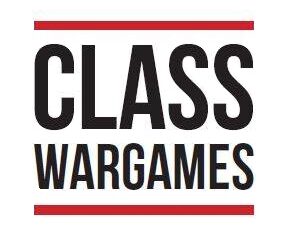1918 Battle of Kazan Scenario for Chris Peers’ Reds versus Reds
Cyberfest ’08, State Hermitage Museum, St. Petersburg, Russia, 27th November 2008.
All toy soldiers, trees and buildings sculpted, modelled and painted by Mark Copplestone.
This is not an attempt at realism: there is no attempt to deceive the eye, as in a model railway or museum diorama. This is a conscious design, representing in symbols (which in this case are paradoxically almost-realistic models) elements of historical reality, perceptions of Russia and, as the game progresses, the passing of time.
How to transform a plain green sheet into something that instantly suggests “Russia” (at least to an English mind)? A single birch tree may be enough. Several birch trees are better. Then a straight track, unmetalled, suggests vastness – an archetypal English track would wind around ancient field boundaries. Then a few wooden buildings. Somehow these are not the log cabins of the American Old West. But why the one house with blue shutters? Enough to mark its owner out as a kulak perhaps.
Now to move closer, to read smaller and more obscure symbols. Still nothing left to chance.
All the soldiers represented in this game took their uniforms from the same Tsarist stocks: they should look the same. In reality they often did, but in this game-construct they are all subtly different. The differences inform a careful observer.
The Red Army is represented by toy soldiers in many different poses in many variations of uniform. In 1918 revolutionary fashion demanded a casual disdain for uniformity and a repudiation of the strictures of the Tsarist army. Above all no shoulder boards (pogony). Their officers look smarter, and out-of-step with the men. They must be “military-specialists”, ex-Tsarist officers recruited by Trotsky and kept in check by a parallel system of political commissars.
The Komuch People’s Army is represented with many small contradictions, a microcosm of the political entity itself. The toy soldiers representing the People’s Army are neater with fewer poses: a reflection of the desire of the politicians of Komuch to create an egalitarian democratic army. They have no shoulder boards, and their caps bear a ribbon in orange and black. These are the colours of the St George’s gallantry medal. This uncomfortable combination is perhaps a sign of Komuch’s willingness to negotiate with the symbols and realities of traditional Russia. The white armbands worn by the officers and specialist troops tell a different story. On one hand they are an easily recognisable field sign, but they also represent the subversion of the People’s Army by professional officers with more right-wing “White” views, out of sympathy with their political masters. The People’s Army has no equivalent of the Red Army’s commissars. The regimental flag too is an essay in symbolic conflict: the colour of revolution juxtaposed with those of tradition. The toy soldiers of the Czech Legion are even more uniform. This is a traditional army without a guiding political ideology – democratic (and so no shoulder boards), with socialist sympathies but essentially nationalistic. On their caps their national colours, red and white.
At the time of the Russian Civil War the popularisation of military cartography and the appearance of the new art (or science) of aerial photography had exerted a strong influence on progressive artists of the time, notably Kazimir Malevich. Seen from above the tabletop game resembles an aerial view, and can similarly lead us to a further level of abstraction where military units can be represented by geometric
shapes.
Ceci n’est pas un jeu de guerre!
